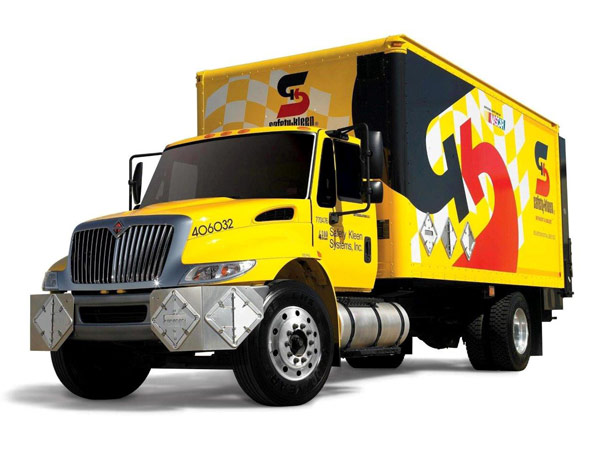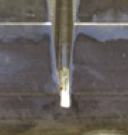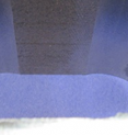How Often Do I Need to Change My Cleaner?
If we asked you how long you’d like your aqueous cleaning product to last, you’d probably say something like “forever,” and you wouldn’t be joking.
In a perfect world, our cleaning solutions would last infinite lengths of time.
But our world isn’t perfect, and though there are companies out there trying to create solutions to this problem, the solutions tend to come along with many downfalls that prove to be inefficient.
Instead we focus on extending the life of our baths and being able to predict as closely as possible to when we need to swap them out.
So what’s the formula for this? There is no surefire guarantee, but typically we need to explore three questions:
- How much soil is on my parts?
- How many parts am I washing?
- How big is the sump in my aqueous parts washer?
Not surprisingly, the dirtier the parts and the more of them there are, the sooner a bath will need to be replaced. However, another important factor to consider is the sump size of your aqueous cleaning system. Sump size is one of the most overlooked items when a business is making a buying decision with automated aqueous cleaning equipment. Why is this so important? Because it will dictate how much soil in solution you can actually retain in your aqueous parts washer before the solution is spent.
Everyone’s situation is different, and the chemical composition of each soil varies, so there’s no one way to know exactly how long your cleaning solution will last before needing a new one.
One thing you can do that will help you is learning as much as possible about your own personal process. After you’re first few services, you will learn about your specific bath application. Based on your specific parts’ soil load and volume you will start to determine when your bath will need to be swapped out in a specific timeframe. You’ll also know when it’s time because cleaning efficiency levels or efficacy will drop. Keep an eye on the cleanliness of your parts, and the length of time it takes to clean each batch of parts. Remember that ultimately it is up to you to determine how clean is clean and what is acceptable for your business and your customers.
Why does my bath even need to be changed?
In a recent blog post, we discussed that aqueous cleaners recruit help from substances called surfactants—an ingredient that tends to reduce the surface tension of a liquid in which it is dissolved. By adding a surfactant to a cleaner, chemists are able to break down the boundaries between water, oils and greases.
Surfactant molecules pull off dirt and hold it in suspension in the water. At some point (an amount of time that will be revealed only by your personal cleaning habits), there will be so much dirt in the bath that all of the soap molecules will become saturated and unable to remove new soils from the surfaces being cleaned. When your parts aren’t quite as clean as they should be, or cleaning takes much longer than it used to, it’s time to change your bath.
Just adding additional cleaner to the bath is not the solution either. The surfactant molecules that are saturated become heavy and start to accumulate at the bottom of the bath. This becomes over time that thick sludgy layer build up that will eventually start to cause your pump, heating elements or sump area to fail costing you production time and costly repairs.
Again, what we can deduce is that the more parts you have and the heavier your soils are, the more frequently you’ll need to replace your bath. Applications that may encounter such issues could include the cleaning of re-manufactured parts or parts from maintenance functions.
If you’re dealing with lighter soils and your parts take up less surface area, you’ll encounter a longer bath replacement cycle. Applications that may encounter lengthier bath efficiencies include the cleaning of newly machined widgets or fabricated metal parts.
There are some products—such as oil skimmers—that can help extend your bath life. However oil skimmers only remove oil, so they still leave behind the soil saturated surfactants to accumulate in your bath. The inevitable soil saturation will still occur and your aqueous cleaning equipment will need to be serviced at some point.
 We know this takes time away from other responsibilities, and the added stress about trying to keep your business in compliance with local, state and federal rules is daunting. That’s where service providers like Safety-Kleen step in. They have the trained personnel to provide this type of service to its customers. Their environmental professionals will travel to you, pump the spent solution from your bath, clean your equipment, and provide new solution for your bath. They will also haul away and properly dispose of the spent solution providing a complete turnkey service for your business thus eliminating the headache of having to make proper arrangements to do the job yourself.
We know this takes time away from other responsibilities, and the added stress about trying to keep your business in compliance with local, state and federal rules is daunting. That’s where service providers like Safety-Kleen step in. They have the trained personnel to provide this type of service to its customers. Their environmental professionals will travel to you, pump the spent solution from your bath, clean your equipment, and provide new solution for your bath. They will also haul away and properly dispose of the spent solution providing a complete turnkey service for your business thus eliminating the headache of having to make proper arrangements to do the job yourself.
Bath replacement could range from every few days to 8 to 12 weeks, to 6 months or longer in rare circumstances. So take the time initially to learn about your cleaning process and when the time comes, team up with an environmental service expert like Safety-Kleen to help you deal with properly maintaining your equipment when it is time to have it serviced.
- Log in to post comments




